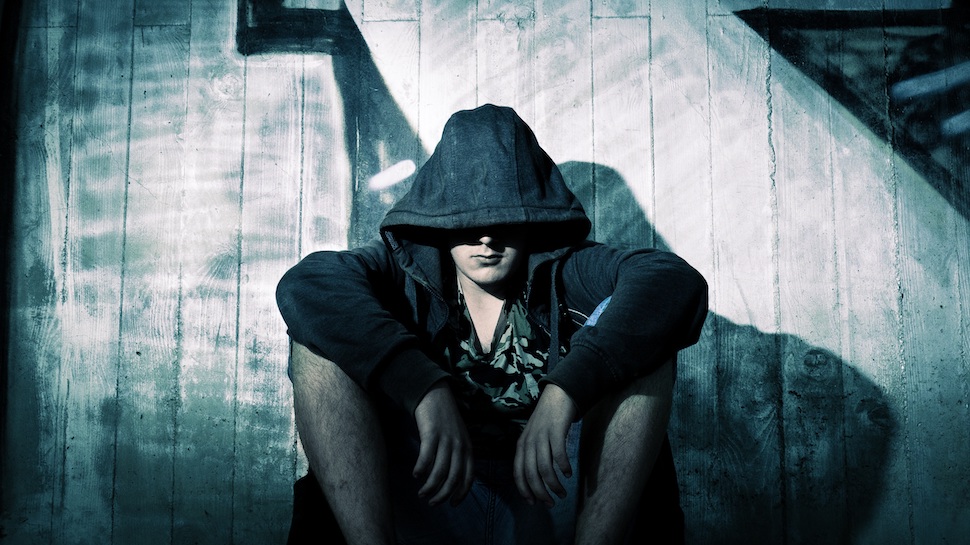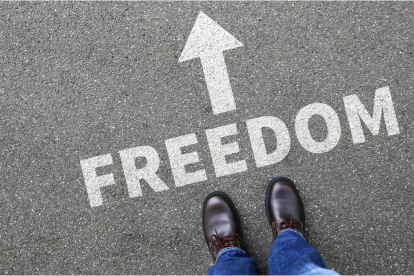
What is Bipolar Schizoaffective Disorder?
Bipolar schizoaffective disorder is one of two types of schizoaffective disorder, a chronic but treatable mental health condition. The other type is depressive. The condition is characterized by the symptoms of psychosis seen with schizophrenia as well as the symptoms of bipolar disorder, which include cycles of mania and depression. This is a serious mental illness and must be diagnosed professionally and treated in order for a person to manage symptoms and live as independently as possible.
Overview of Bipolar Schizoaffective Disorder
Schizoaffective disorder bipolar type is a subtype of a very serious mental health condition called schizoaffective disorder. This mental illness is a combination of symptoms of schizophrenia and symptoms of a mood disorder. In the case of the bipolar type, the mood disorder experienced by the patient is bipolar disorder. Other people with schizoaffective disorder have the depressive type, which causes symptoms of schizophrenia and major depression.
With symptoms of both bipolar and schizophrenia, two very serious mental illnesses, it is crucial to get an accurate and professional diagnosis. Bipolar schizoaffective disorder is typically disruptive to normal activities, and even interferes with a person’s ability to live independently. Diagnosis by a mental health professional, made or confirmed by a psychiatrist, is important for accuracy and for creating and implementing an effective treatment plan. This mental illness is chronic and will not go away, but treatment makes it manageable in most people.
What is Bipolar Disorder?
Bipolar disorder, which was previously referred to as manic depression, causes extreme swings in mood between depression and mania. The condition causes a person to cycle between extreme highs and lows in mood, which can be very disruptive and difficult to manage. In some people the cycle may be infrequent, while in others it can be a rapid process with several episodes per year. In the times between depressive and manic episodes a person may feel fine or may have some mood and emotional symptoms.
Schizoaffective Disorder Symptoms – Schizophrenia
Schizophrenia is a serious mental illness characterized by several types of symptoms, including the symptoms that can be classified as psychosis, or a detachment from reality. It is the most common type of psychosis diagnosed. A person with bipolar schizoaffective disorder may experience any or all of these symptoms:
- Positive symptoms. The most characteristic symptoms of schizophrenia are positive, meaning those that are not normally present, and they are also related to psychosis. Hallucinations are visions, sounds, or voices a person believes are really there but that are not actually real. Delusions are false beliefs that persist in the face of evidence, such as beliefs in untrue conspiracies.
- Negative symptoms. These symptoms represent deficits, like a lack of emotion or affect in facial expressions or tone of voice. Other deficits may include an unwillingness or inability to complete ordinary tasks or activities. This may manifest as a general lack of interest in relationships, work, school, or life in general.
- Cognitive/behavioral symptoms. Schizophrenic symptoms may also include difficulty thinking or remembering, disordered thoughts, and a lack of awareness of one’s own illness. Behavioral symptoms may include anything unusual, such as agitation or acting like a child, repetitive motions, or mimicking someone else’s motions.
Schizoaffective Disorder Affects 1 in 300 Adults
You're Not Alone. We're Here to Help.
Symptoms of Schizoaffective Bipolar Type
In terms of schizoaffective disorder vs. schizophrenia, the difference lies in the mood disorder symptoms. Someone diagnosed with schizophrenia will only experience the aforementioned symptoms of this mental illness. But, someone diagnosed with schizoaffective disorder experiences those symptoms as well as symptoms of a mood disorder, depression or bipolar disorder. Symptoms of bipolar disorder include:
- Mania or manic episodes. During a manic period a person has an extreme amount of energy and feels exaggerated self-confidence and an ability to keep going without much sleep. The high that someone experiences during mania is not normal and goes to the extreme, often resulting in irritability, anger, aggression, risky behaviors, and even suicide in some cases.
- Depressive episodes. In a depressive episode the symptoms are the same as major depression: hopelessness, sadness, guilt, shame, changes in sleeping and eating patterns, weight loss or weight gain, lack of energy, loss of interest in activities, and sometimes suicidal thoughts or attempts at suicide.
Someone diagnosed with schizoaffective disorder depressive type will only experience the symptoms of major depression along with schizophrenic symptoms. They will not experience manic episodes or symptoms of mania.
Diagnostic Criteria for Bipolar Schizoaffective Disorder
Simply experiencing some of the symptoms of bipolar schizoaffective disorder may not be enough to be given an official diagnosis. There are specific criteria for diagnosis of schizoaffective disorder, and these should be evaluated by a mental health professional during a psychiatric assessment. Diagnosis requires an experienced professional because it is easy to confuse this condition with bipolar disorder or schizophrenia and to make an inaccurate diagnosis. The criteria for bipolar type schizoaffective disorder include:
- A period of time in which a person experiences both the symptoms of schizophrenia and the symptoms of bipolar disorder at the same time.
- A person must also experience symptoms of psychosis, delusions or hallucinations for at least two weeks without the presence of bipolar symptoms.
- The bipolar symptoms must be present for most of the time a person experiences mental health symptoms.
- It is very important for a diagnosis that drug use as a cause of symptoms can be ruled out.
Bipolar Schizoaffective Disorder Treatment
Treatment is essential for managing either type of schizoaffective disorder. This is not a condition that gets better on its own, although it may come and go with episodes of more or less severe symptoms. An accurate and professional diagnosis should be followed by the development of a treatment plan, and this plan should be changed and updated as a patient’s symptoms evolve or if a medication or type of therapy is not effective. There are three main branches of treatment:
- Medications. Three types of medications may be used to treat schizoaffective bipolar type disorder. Antipsychotics treat the symptoms of psychosis, including hallucinations, delusions, and severe mania. Mood stabilizers are used to treat bipolar symptoms, reducing the mood swings from depression to mania and back. Antidepressants may or may not be needed to treat the symptoms of depression.
- Psychotherapy. Medications have the potential to provide a great deal of relief for patients, but the most effective treatment also includes therapy. Cognitive behavioral therapy is commonly used and helps a patient learn to control and manage negative thoughts, reverse negative thinking, change behaviors, and recognize the early signs of returning symptoms or episodes of psychosis, depression, or mania.
- Self-Care. Finally, patients can take their care into their own hands by sticking to the treatment plan, learning and using stress-relief strategies, participating in support groups, working on maintaining positive relationships, and learning more about their illness.
Complications – Schizoaffective Disorder and Suicide
There are many potential complications of living with schizoaffective disorder of any type, but the most serious and life-threatening is suicide. Someone with bipolar schizoaffective disorder experiences symptoms of three types of mental illness or mental health episodes—schizophrenia, depression, and mania—that are risk factors for suicidal thoughts.
| Potential Complications of Living with Schizoaffective Disorder |
| Suicide Social isolation Damaged relationships and distance from family Difficulty at school or work Inability to keep a job, and resulting poverty or homelessness Substance abuse and addiction Incarceration |
Looking for the Best Schizoaffective Treatment?
Learn More About Treatment at BrightQuest
Getting Help for Bipolar Schizoaffective Disorder
Anyone who recognizes any of these symptoms in themselves, or who is troubled by their thoughts and behaviors, or worried about hearing and seeing things that other people don’t hear or see, should seek help right away. Telling a friend or a family member is a good place to start, but seeing a doctor or mental health professional is the next important step. Even just seeing one’s general practitioner is a great step, because that doctor can recommend a specialist or what to do next.
Friends and family play an important role in getting help for someone who is struggling. It is common to be unaware of one’s own symptoms, and it is often easier for someone else to recognize them first. It is crucial to offer help or to get someone help who is exhibiting symptoms of a mental illness or whose behaviors just don’t seem right and have changed from what is normal.
Schizoaffective disorder bipolar type is not an illness to be taken lightly. Without diagnosis and treatment, there are many potential complications that can cause myriad problems and even be life-threatening. Professional diagnosis, multi-faceted treatment, and support from friends and family are crucial for helping someone with this condition return to a better way of life, with relief from difficult symptoms.
Treatment at BrightQuest
BrightQuest Treatment Centers provide world-class residential treatment for schizoaffective disorder and other complex mental illnesses. We know that choosing the right treatment option for yourself or a loved one is difficult. We believe our unique model of care gives our clients the best chance at success.
- Family Integration in Treatment
- Inclusive Therapeutic Community
- Focus on Lasting Behavioral Change
We offer clients the tools, skills, and support necessary to attain greater stability and independence with the confidence and courage to live a healthy, happy, and productive life.



